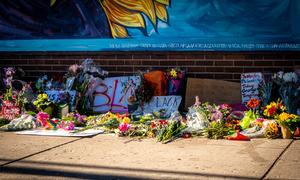Toolkit for “A Museum. A Memorial. A Message.”




The latest issue of Teaching Tolerance is now available online, and copies should begin arriving by mail next week! We’re proud to share stories about families uniting to fight racism in schools, advocates working to ensure no student goes hungry, scholars analyzing the impact of school curricula and more.
Analyzing whose perspective is centered and whose is erased in significant conversations and spheres of influence paints a clear picture—an inconvenient truth— about the pervasiveness of systemic racism. And it’s particularly important that Black children see themselves represented in these narratives—especially in those spaces where Black people are intentionally rendered invisible. These LFJ resources highlight what’s at stake in the choices we make.
The same day a Black man and a Jewish man were voted into the U.S. Senate, a mob toting Confederate and Nazi flags attacked the U.S. Capitol. As you teach about Martin Luther King Jr. ahead of his birthday observation, acknowledge the link between the racism he resisted and the violence we witnessed at the Capitol. These resources will help foster related discussions within the context of U.S. history.